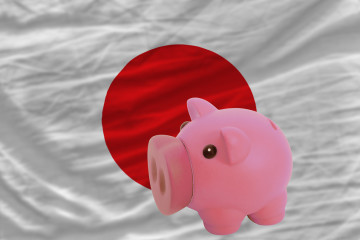Bloomberg Business: Bank of Japan Should Build on Healthy Land Data: William Pesek
©2015 Bloomberg View
NLHBS36KLVR9
Japan’s latest land-price data poses a conundrum for economists. Is a 0.7 percent rise in Tokyo, Osaka and Nagoya prices proof that the central bank’s quantitative-easing program is gaining traction? Or does the 0.3 percent drop in land costs nationwide underscore how persistent deflation remains? Let’s put this one in the plus column for Bank of Japan Governor Haruhiko Kuroda. It’s clear progress that January land prices in Japan’s three largest metropolitan areas rose even slightly from 12 months earlier, for the second year in a row. Record-low interest rates — and debt yields that have gone negative at times — are boosting housing demand and property investments. It’s promising, too, that the average decline in nationwide values was the smallest in seven years.The question is how Kuroda can expand on this pocket of success to broaden the impact of the BOJ’s unprecedented easing program. Here, it’s worth noting that skeptics, too, have a valid point. The divergence in price trends between Japan’s biggest cities and the rest of the country suggests that BOJ policies are too geographically concentrated to succeed. It highlights, also, the piecemeal impact of Prime Minister Shinzo Abe’s reforms. If you own land in three of Japan’s 800 largest cities, or stocks, Abe’s efforts are clearly bearing fruit. If not, your disposable income is falling as the weak yen boosts consumer prices. This tale of two recoveries extends to exporters. Giant manufacturers are recording record profits, while small companies that have to import raw materials or intermediate goods are seeing red ink. This may not be Kuroda’s fault, but it’s certainly the BOJ’s problem — and a growing one. Since I last explored this dilemma in January, the argument for a broader, less urban BOJ approach has only gotten stronger. In that earlier piece, I argued that Kuroda should target the hinterlands with his monetary largess. Along with the $700 billion of government bonds it’s buying annually, the BOJ could be loading up on regional-government debt. It also could shop for regional bank IOUs in hopes of getting lenders to help Tokyo catalyze the multiplier effect that lends impetus to monetary policy. Two years into Kuroda’s shock-and-awe campaign, these latest land data shows it’s time for the BOJ to get more involved in property markets. In January 2013, the bank trumpeted plans to buy into real estate investment trusts, or REITs. Yet as of today, it’s pumped less than $1.7 billion into such investments — a pittance in a $4.9 trillion economy struggling to end 20 years of deflation.
Remember that while the BOJ isn’t getting traction broadly (Kuroda himself says consumer prices may soon dip below zero again) it’s having some success in the land-value space. Kuroda should ramp up REIT purchases significantly. In January, he said “we can make adjustments to our monetary policy” if the BOJ’s 2 percent inflation target looks unattainable. We’re way past that point, with oil prices continuing to fall, China slowing and the wage gains Tokyo was hoping to see from corporate Japan looking relatively modest. As of January, wages adjusted for inflation were down for 19 consecutive months. Kuroda’s purchases of exchange-traded funds (about $37 billion) far exceed REIT investments. Enlivening land prices in rural Japan would pay much greater dividends. Stocks don’t need more attention from the government, which has nudged the $1.1 trillion Government Pension Investment Fund to pump up the Nikkei. And as my Bloomberg colleagues Anna Kitanaka and Toshiro Hasegawa have shown, Tokyo’s bureaucrats are rolling out ever- more gimmicks to get average Japanese to buy stocks — pushing a list of companies that prioritize employee health, getting women to buy shares by offering free cakes, you name it.
What’s missing is liquidity flowing beyond the three biggest cities to places such as Hokkaido, Kyushu, Okinawa and earthquake-ravaged Tohoku. Among the steps Kuroda could take: assuming (and effectively forgiving) debt of the most down-an- out municipalities; buying distressed properties from airports to underused sports facilities; loading up on more asset- and mortgage-backed securities; investing in “zaito bonds,” which state-run companies issue to finance projects. The key is to put cash directly into the hands of rural Japanese. Pouring money into land could be just the thing for a recovery in need of stronger foundations.
For more columns from Bloomberg View, visit http://www.bloomberg.com/view







No Comment